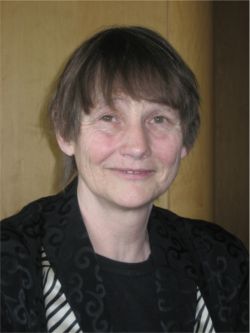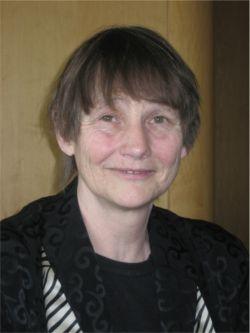Outstanding young men
In the autumn, here in Norway, a new round of the grant Outstanding Young Investigators (OYI), will be launched. Professor Inge Henningsen is of the opinion that the Research Council of Norway should make an equal opportunities assessment of the whole program.

In October the Research Council of Norway will announce new grants to outstanding young researchers. On their website the Council specify that they want many good female candidates this time. If they really want this to happen they should perhaps listen to Inge Henningsen, professor of statistics at the University of Copenhagen. In her opinion the Research Council of Norway could have predicted the gender imbalance of the grants awarded in 2004, when only 4 of the 26 outstanding young researchers who received grants were women.
"The imbalance should not have come as a surprise," she says. "An equal opportunities evaluation of the scheme would have predicted a clear majority of men. And as a bonus it would also have predicted the uneven allocation between the academic disciplines."
Because it was not only the gender balance that was unequal in the award of the OYI grants. Despite the awards being open for candidates from all academic disciplines the allocation by discipline was very uneven. A large predominance of researchers who were awarded grants were from theoretical disciplines and from theoretical sub-disciplines of the various disciplines, such as physics, mathematics and linguistics. Technical and clinical disciplines on the other hand were barely represented.
Assessing the target group
There are several things that should be taken into account in an equal opportunities evaluation of the OYI scheme, according to Henningsen. "The first concerns the target group. The scheme is not aimed at PhD students and only in a limited way at post-doctoral research fellows. This is a group in which there are still many women. It is mostly aimed at one level above on the career ladder, at associate professors and their equivalent. At this level many women have already been sorted out of the target group."
Most candidates who qualify for the award already occupy permanent positions. In other words the scheme can only in a limited manner counteract 'the leaking pipeline', which separates out women at the threshold to permanent job.
Henningsen has also shown that the ratio of women who received awards in 2004 was lower than that of women among newly appointed associate professors and full professors in Norway.
"From this we can calculate that the programme will contribute to keeping the ratio of female professors down by favourizing men’s chances of becoming qualified for promotion," she expounds.
What’s in a name?
Even the name of the scheme, 'outstanding young investigators', according to Henningsen sends out both symbolic and concrete signals that say that the target group is young men from strongly theoretical and abstract disciplines.
"It is well known that both candidate age and the age of new doctors is lower in the technical disciplines and in the maths-physics-chemistry group of the natural sciences. Therefore, the use of 'young' points directly at these disciplines," she says, and adds: "These are also disciplines where men make up an overwhelming majority."
Additionally, in Henningsen’s opinion the age criteria for the OYI grant, that applicants should be 40 or younger, can contribute to the gender imbalance.
"There are cultural and biological factors, especially in relation to starting a family and childbirth, that make it difficult for women in their thirties to enjoy the full benefits of the scheme."
Outstanding
What about the use of the word 'outstanding', does this have any influence on the process? Yes, in the opinion of Henningsen.
"'Outstanding' is a word, which in the normal academic conscience is connected to the more theoretical, preferably precise and measurable disciplines. One can, for example, be an outstanding astrophysicist, but hardly an outstanding gerontologist. The word 'outstanding' therefore deselects candidates from practical disciplines."
She is also of the opinion that in the academic world the word 'outstanding' has certain stereotypical characteristics, which are mostly found in men. Once 'outstanding' is combined with age then the characteristic 'outstanding young investigator' typically leads one to think of the abstract, theoretical disciplines such as mathematics and physics where talent is often recognised early on.
"In many of the humanities and social sciences much more background experience is necessary before one can do 'outstanding' research, and the 'outstanding' research is often done by more mature researchers. Whereas there are comparatively many examples from mathematics and physics of young men that have made outstanding contributions to science while they were in their twenties."
Not unique
Henningsen also believes that the gender imbalance among both the OYI applications and those young researchers who are chosen is partly a result of the way the scheme is set up, both in relation to its language and the criteria it employs. The question then arises of whether the Research Council of Norway’s desire for more female candidates can correct this gender imbalance.
She points out that the gender and discipline composition of the distribution of OYI funds in Norway is not unique. The Danish programme 'Unge Eliteforskere' (elite young researchers), that was awarded at the beginning of 2006 had a similar outcome. 7 of the 24 candidates who were successful were women, and only a few of the candidates were doing applied research. The latest round of European Young Investigator Awards (EURYI) only included 3 women of a total of 25 successful applicants, in other words 12 per cent, while barely 25 of the applicants were women.
"Taken alone these represent only a small figure, but a meta-analysis would without doubt confirm that women 'fall by the wayside' during the awarding," Henningsen says, and finishes off by pointing how the focus on outstanding research and researchers has made a new 'super category' within academia.
"It’s typical that when the gender balance is improving in some of the top jobs they go and make a new top category where again the number of women is very low," she concludes.
Translated by Matthew Whiting KILDEN
In 2003 The Research Council of Norway passed a scheme for outstanding young researchers under the age of 40. The intention was to give research talent the best conditions possible in which to achieve international standards of excellence in their work. 26 of the 218 candidates were assessed as outstanding. 22 of these were men, and 4 women.
The Research Council are now planning a new round of the OYI scheme. The means available will be announced in the course of the summer, and the application deadline has been set as October 12 2006.
The scheme is aimed at younger researchers near the beginning of their research career. The candidates are assumed to have published a certain amount of their research since completing their doctorate, but no absolute age limit has been introduced. Approximately 10 projects will be granted funds of around 2-2.5 million Norwegian kroner (NOK), and the scheme is open to all academic disciplines.
